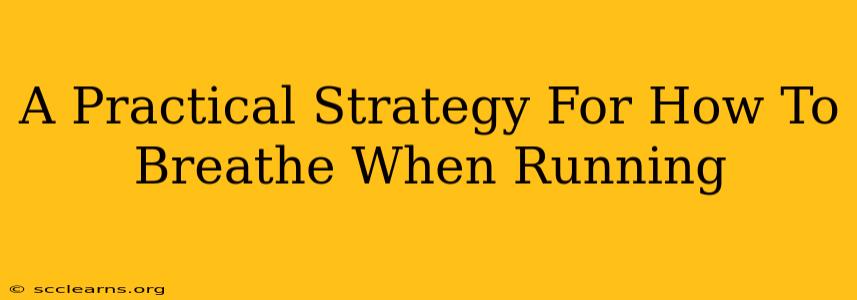Running is a fantastic way to improve your cardiovascular health, boost your mood, and shed those extra pounds. But for many, the biggest hurdle isn't the distance or the pace – it's learning how to breathe effectively while running. Proper breathing is crucial for endurance, performance, and preventing injury. This guide will provide a practical strategy to help you master your breath and conquer your runs.
Understanding the Importance of Breathing Technique
Before diving into techniques, let's understand why proper breathing is so vital. When you run, your body demands more oxygen. Inefficient breathing can lead to:
- Side Stitches: That sharp pain in your side is often a result of improper breathing mechanics and diaphragm irritation.
- Reduced Endurance: Lack of oxygen limits your ability to sustain a pace.
- Increased Fatigue: Your muscles will tire more quickly if they're not receiving enough oxygen.
- Increased Risk of Injury: Poor breathing patterns can lead to muscle imbalances and increased stress on joints.
Breathing Techniques for Runners: A Step-by-Step Guide
Several techniques can optimize your breathing while running. The best approach often involves experimentation to find what works best for your body.
1. Diaphragmatic Breathing (Belly Breathing): The Foundation
Diaphragmatic breathing, also known as belly breathing, is the cornerstone of efficient running breathing. It involves using your diaphragm – the muscle beneath your lungs – to draw air deeply into your lungs.
- How to do it: Place one hand on your chest and the other on your stomach. As you inhale, your stomach should expand, while your chest remains relatively still. Exhale slowly, feeling your stomach contract.
Why it's important: Diaphragmatic breathing maximizes lung capacity, allowing you to take in more oxygen with each breath.
2. Rhythmic Breathing: Finding Your Pace
Rhythmic breathing is about coordinating your breaths with your steps. Experiment with different ratios to find what feels most natural. Common ratios include:
- 2:2 Breathing: Inhale for two steps, exhale for two steps.
- 3:3 Breathing: Inhale for three steps, exhale for three steps.
- 2:3 Breathing: Inhale for two steps, exhale for three steps. (Often preferred for uphill running)
Tips for finding your rhythm: Start at a comfortable pace, focus on your breathing, and adjust the ratio as needed to maintain a comfortable breathing pattern.
3. Mouth vs. Nose Breathing: The Debate
The ideal breathing method is often a combination of both. Many runners find it beneficial to:
- Inhale through your nose and mouth: This maximizes airflow.
- Exhale through your mouth: This helps to expel carbon dioxide more efficiently.
However, during high-intensity runs, you may find yourself naturally switching to mouth breathing to get more oxygen.
4. Breathing Exercises for Runners: Pre-Run Prep
Improving your breathing capacity before you even start running can significantly enhance your performance. Try incorporating these simple exercises:
- Diaphragmatic Breathing Exercises: Practice belly breathing for 5-10 minutes daily.
- Controlled Exhalation: Practice long, controlled exhalations to strengthen your respiratory muscles.
5. Listening to Your Body: The Key to Success
Ultimately, the best breathing technique is the one that feels most comfortable and efficient for you. Pay attention to your body's signals. If you're feeling breathless or experiencing side stitches, adjust your pace or breathing pattern.
Optimizing Your Running Performance Through Breath Control
Mastering your breathing isn't just about avoiding side stitches; it's about unlocking your full running potential. By focusing on diaphragmatic breathing, finding your rhythmic pace, and understanding the mouth vs. nose breathing debate, you’ll significantly improve your endurance, performance, and overall enjoyment of running. Remember to listen to your body and adapt your technique as needed – your breath is your key to a successful run!

